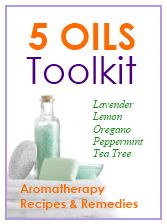Steam Distillation of Essential Oils
The majority of the essential oils in use in aromatherapy practices today are extracted using a steam distillation process. This is the oldest known form of essential oil extraction and is believed by many to be the only way these oils should be extracted.
The process of steam distillation is really pretty simple, but, the extraction process must be closely monitored to insure the steam will remain at a temperature level which will not damage the plants. At one time, this was a labor intensive process, but modern echnology has relieved the individual of much of the tedious parts of the process.
In a steam distillation process, the plant material to be used is first placed in a still.
A still is simply a specialized piece of equipment that is used in many different distillation
processes. The still which is used in the steam distillation of essential oils is is a first cousin to the one used by bootleggers and whiskey manufacturers.
Basically, it consists of two parts: a vessel to which heat is applied and a device that is used for cooling.
The plant material is placed into this vessel, and steam is passed through the plant. The heat from the steam helps to open the portions of the plant that contain the plant's aromatic molecules or oils. Once these are opened, the plant releases its aromatic molecules and the fragrant molecules rise along with the steam.
The vapors carrying these molecules then are passed through a closed system towards the cooling device.
Cold water is commonly used to cool the vapors. And, as it cools, the vapor condenses and transforms into a liquid state. This liquid is collected in a container and, as with any type of oil/water mixture, it separates into these two substances. The oils float towards the top while the water settles below. From this point, it's a pretty simple matter to remove the oils that have been separated from the plant. These are the highly condensed, aromatic oils, known as essential oils which are used in aromatherapy.
You might be surprised to learn that the water is not discarded, however. This water, which
also contains the plant's aroma along with the other parts of the plant that are water soluble, are the hydrosols - a milder form of the essential oils.
These, too are also used in aromatherapy.
When steam is used, it's raised to a pressure higher than that of the surrounding
atmosphere. The boiling point is above 100 degrees Celsius and creates
an extraction process that is safe and fast. If, on the other hand, the
temperature is allowed to become too hot, the plant material as well as its
essential oils can be easily damaged.
Water Distillation
Water distillation involves placing the desired plant material in a
still and then submerging it in water. The water is then brought to a
boil. Again, the heat helps open the pockets containing the plant's
aromatic
molecules so they can be extracted. The vapors cool and condense, the
essential oils separate from the water and they're collected.
The water in this case provides protection for the plant because it
acts as a barrier. Less pressure is used as well as a lower temperature
than that which is used in the steam distillation method. This
extraction method works well with plants which cannot tolerate high
heat.
Other Distillation Methods
Hydro distillation is similar to steam distillation. The only
difference is that instead of introducing the heat from the bottom and
up through the still, as happens in steam distillation, the heat passes
into the still from the top. It's cooled from below, which makes
collection of the essential oils easier. This method usually results
in a higher yield of essential oils because less steam, and consequently less processing time, are involved.
There is also a water/steam combination distillation method, in which
the plant material is submerged into heated water and steam is forced through the water,
opening the pockets containing the aroma molecules. When cooled, the
essential oils condense and are collected as described above.
How to make over 130 natural home remedies & aromatherapy recipes using only 5 essential oils.
|

|
Benefits of Aromatherapy


